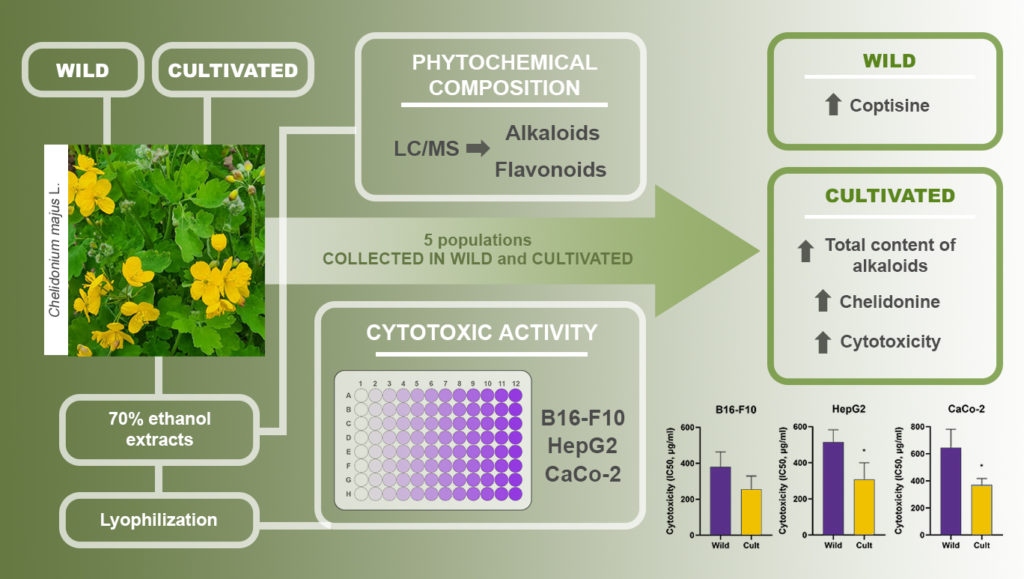Greater celandine (Chelidonium majus L.) is a widely distributed valuable medicinal plant. In traditional medicine, this plant has been used to treat bile and liver disorders, and externally it has been used for the treatment of warts, corns, fungal infections, eczema, and tumors of the skin. Many ethnobotanical studies across Europe suggest using it for the treatment of ophthalmological problems and gastrointestinal and skin disorders. However, these indications were not supported due to a lack of information on clinical safety.
From a research point of view, this plant is still very attractive – it is widely used in folk medicine, but it has not yet acquired the status of an officially approved and evidence-based herbal medicine. Therefore it has been interesting for researchers to investigate it.
From another point of view, the market demand for biologically active ingredients from plants is increasing, and the cultivation of medicinal plants offers several benefits over a collection of wild plants, e.g., reliable supply, standardized and improved production, and certainty of botanical identity. Therefore, it was important to assess the influence of cultivation practices (growing in the wild or under organic farming conditions) on the phytochemical composition of C. majus populations as well.
Researchers from the Latvian Institute of Organic Synthesis and Institute for Environmental Solutions (Latvia) have investigated how growing conditions affect both the phytochemical compositions and cytotoxic activities of C. majus. They compared aerial parts of wild populations of C. majus originating from different regions of Latvia and the same wild populations planted and cultivated under organic farming conditions. Researchers have found that the total content of alkaloids in aqueous ethanol extracts prepared from cultivated C. majus specimens was higher than that observed in extracts prepared from wild-grown plant material. The observed differences in the phytochemical compositions of the C. majus extracts resulted in significant increases in the cytotoxic activities as well.
Read the article:
Krizhanovska, V., Sile, I., Kronberga, A., Nakurte, I., Mezaka, I., Dambrova, M., Pugovics, O., Grinberga, S.*
The Cultivation of Chelidonium majus L. Increased the Total Alkaloid Content and Cytotoxic Activity Compared with Those of Wild-Grown Plants.
Plants 2021, 10(9), 1971; doi: 10.3390/plants10091971

